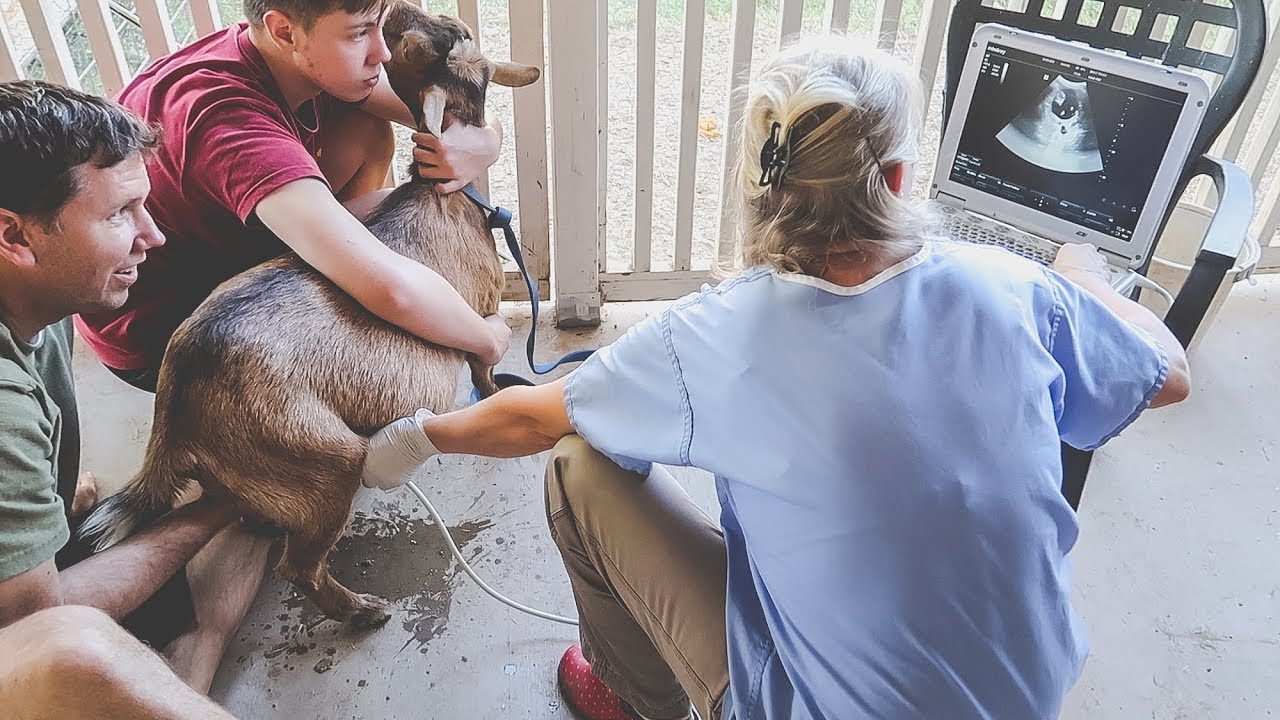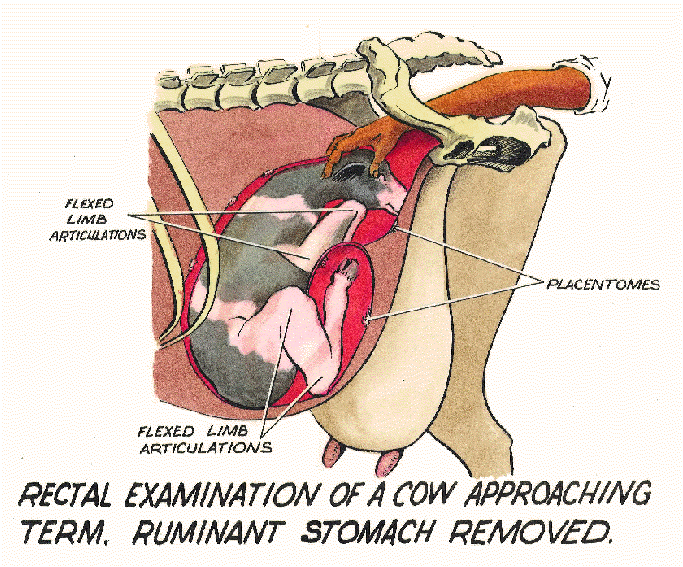A management programme on a farm must include a lot of aspects. One of the most important aspects that must form part of your management plans is your breeding program.
You have studied from level I all the different aspects that play a role in managing your breeding. Now you can use your knowledge to compile a management program for a farming enterprise.
Different Breeding Methods That Can Be Implemented In Your Breeding Plan
Every breeding method can be implemented and have its own advantages and disadvantages. We have discussed the different breeding methods in the previous level. It is such an important aspect that we will briefly look at it again. The main aim is to get as much offspring from your animals as possible.
Intensive farming with dairy cows enables the farmer to detect cows in heat (oestrus) easily and therefore it is easy to implement an AI breeding program. The farmer normally uses a bull on his heifers and use AI on his cows. The AI industry is very well developed in the dairy industry.
Other Animal Breeds And The Breeding Programs Used
Mass Mating
Mass mating is where three to four percent males are put among a flock of ewes or a herd of cattle.
Especially on extensive sheep farms this is the most common breeding method. The farmer must be sure that the rams in use are fertile. Several methods can be used to ensure that the ewes are served. In beef cattle the numbers are usually smaller and therefore the farmer can give more attention to the heifers than to the old cows. Sheep however can be run in very large camps and definite methods must be exploiting to make sure that all the ewes make contact with a viral ram.
Methods To Make Sure Mass Mating Is A Success
- Make sure that the rams are fertile by testing them before they are put among the ewes.
- If mating occurs for a period of six weeks, make sure that the rams get enough rest.
- Use between 3 – 4 % fertile rams among the ewes (three percent when all the rams are experienced and 4% when some of the rams in the group are still young males).
How To Rest The Rams
- The best way to rest your rams is too divide the rams in two groups.
- Make sure the condition of the rams is good.
- Give them enough exercise. Exercise and good nutrition is most important to keep your male animals healthy and fertile.
- Use one half of the rams and replace them with the other half after two weeks. Keep on rotating them every two weeks to ensure that they gain condition and get enough rest. Put all the rams among the ewes for the last two weeks.
- It is also a good thing to make sure that the breeding animals (males and females) mingle every day. One water trough in the breeding camp will help in this respect. In group mating, hand mating and artificial insemination, the farmer has better control over the mating process and therefore less rams are necessary.
- A very important point to remember is that the rams must be carefully observed and rams with poor libido and dexterity must be replace with more vigorous rams.
Group Mating (Group Breeding)
In this case the farmer selects a few ewes and mates them with a certain ram. The selected ewes accompanied by a selected ram, are run in a small paddock or camp for about a month.
Hand Mating (Hand Breeding)
Hand mating is a little bit more complicated. The female sheep (let us say 300) graze in a camp, but every morning they are gathered in a big kraal where teaser rams are put in with them. Then, when a teaser ram (he has black paint under his belly for this reason) marked an oestrus ewe by mounting her, the ewe is caught and transferred to a fertile ram in a small kraal. All the ewes that are selected to be mated with a particular ram, is put in the kraal with him. When an ewe is fertilized, she is marked, recorded and joins up with the fertilized flock. After all the ewes in oestrus are identified, the flock is allowed to graze for the rest of the day, until the afternoon. In the early evening the flock is gathered again, and the morning’s procedure is repeated. The ewes that were mated the morning are mated again together with the newly identified ewes in oestrus. The new ones are also marked and put among the mated ewes to be mated again the next morning.
Group of ewes identified for hand mating and mated one by one by a specific ram.

AI (Artificial Insemination)
Artificial Insemination is a more technical method of mating. A few methods can be followed:
- The ewes are synchronized.
- The ewes are synchronized by injecting them with hormones to make them come in heat and ovulate at the same time and then a person inseminates them in the morning and in the afternoon.
- You need special equipment to inseminate a ewe that will be discussed under a unit standard for artificial insemination.
- The second method is to identify ewes in oestrus [the same as for hand mating]. The marked ewes are then inseminated artificially by a human. The procedure is repeated in the afternoon.
Click here to view a video that explains Artificial Insemination for cattle.
Management of the Pregnant Animal
Farm animals need special attention one or other time during their pregnancy.
The pregnancy period (gestation period) can be divided into three stages. The first stage can be seen as a continuation of the period just before mating and requires no special treatment. The female animal must be in a good condition and well fed from approximately three weeks prior to mating. That will ensure that the oestrus period is well-defined, and the mating will be successful.

During the early days of pregnancy, the zygote is very small and needs to be nourished till implantation is well established. After implantation of the embryo and early development of the placenta very little extra feed above maintenance is needed in the adult pregnant female till late in the second trimester (2/3 of pregnancy). During the last third of pregnancy the foetus develops and grows fast. At this stage a female will need extra and good quality feed for building up reserves as well as foetal growth. During the last days, just before birth, the foetus grows very fast. The feeding during this important period is very critical because too much energy and high protein feed may result in a too big foetus and birth problems may occur. However, too little energy can be more dangerous because the female will mobilize her fat reserves. That will produce energy but will also produce ketoses and pregnancy toxaemia may result. Pregnancy toxaemia, a sub-acute metabolic disease of ewes in advanced pregnancy, is characterized by hypoglycaemia, ketonemia and ketonuria. It starts with a quick drop in blood glucose levels and these effects the capacity of the rumen in holding enough feed to be able to feed the foetus and the ewe. This occurs most commonly when the ewe carries a twin or triplets. Good quality energy feed during the days before birth is essential to prevent the condition.
Feeding After Birth
The nursing period is also important. The requirements of the female during lactation is also much more than maintenance.
Dairy cows normally use a lot of their reserves during the first three weeks after birth of the calf. Their milk production increases during that period and reach its peak more or less at three weeks after birth. The intake of the cow will also increase. The space in the abdomen is more because the foetus and placenta were expelled during birth that leaves more space. Now the farmer must make sure that the female animal gets enough good quality food to satisfy her maintenance and production needs.

Management of the Male Animal For The Breeding Season
Care of the Male Animal
The male animal plays such an important role that a few points must be remembered. Make sure the male animal is in very good health, gets enough exercise and gets enough good quality feed. It sometimes happens that the male animal can develop food related diseases such as kidney stone when the ration phosphorus concentration becomes too high. Sometimes the ration contains too much concentrates and ailments such as sour stomach (acidosis) may occur. Male animals are expensive and must be treated well.
When male animals are bought from a breeder the following factors must be established:
Inoculation: Enquire from the breeder against which diseases the male has been immunized. If the male has not been immunized against all local diseases, do so immediately.
Dosing: Determine when the male was last dosed to ensure that he is kept free of internal parasites. Tapeworms and roundworm species can infect all male animals.
Dipping: No young male animal that is chased into the veld and never checked for lice and ticks can be expected to thrive. Every time they are dosed, check for lice and ticks. Dip at the first sign of lice or for heavy tick infestation. Of course, in heart water areas, these dipping are naturally more frequent.
Handling: Since a high-quality diet increases the possibility of "turned intestines", especially for animals such as sheep rams or Angora goat rams, the handling of male animals during shearing, dipping, etc. should be with the necessary caution to prevent this condition. Although the incidence is very low, whenever it occurs it is fatal and causes death within 30 minutes.
Nutrition: This is possibly the most important aspect of male care. Buying a ram that has been well fed, and then suddenly expecting him to mature properly on poor grazing with no nutrition, can be compared to someone buying a prime plant from a nursery and then planting it in barren soil. The results will be the same - disastrous.

One must always keep young male animals with older females so that the males stay in contact with the females during their puberty stages. It ensures that males develop a normal sex relationship towards the female sex.
Test the male animals for fertility before using them in the flock.
Work as opposed to overwork: Many people expect too much from a male animal. Always have at least 3%, preferably 4%, males in the flock during the mating season
Pregnancy Diagnosis
There are many ways to diagnose pregnancy in female farm animals. It is relatively easy to diagnose early pregnancy in bigger animals like cattle. Normally a skilled person examines the female for pregnancy by palpation through the rectum. It is possible to diagnose fairly accurate pregnancy from as early as 1 - 2 months pregnancy.
Definition: Palpation - The act of feeling with the hand and/or the application of the fingers with light pressure to the surface of the uterus, for purpose of determining physical diagnosis.
Small stock makes the diagnoses more difficult. There is however very modern apparatus available. Though expensive, the apparatus can be used with high accuracy by a skilled operator. The apparatus is called an ultrasonic scan apparatus and make use of sound to produce a picture on a screen. It can then be established if the female is pregnant. Although there are a lot of other methods, it is not practical and therefore not discussed.
An experienced farmer can also select ewes in the late pregnancy stage by looking at the development of the udder and the development of the abdomen area. A good stockman can sometimes select pregnant animals as early as a month and a half before birth.

Click here to view a video that explains how to know that the sheep is pregnant?



